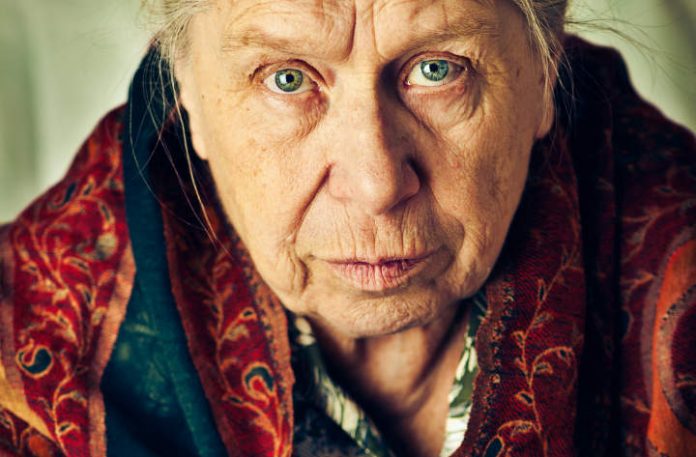People from the Rainbow community concerned about elder abuse can now watch a free webinar recorded as part of Mardi Gras 2021 which features prominent community members (including 78ers*) sharing how they are protecting themselves.
The webinar took place on February 25 in the lead up to the release of the Final Report of the Royal Commission into Aged Care Quality and Safety, which highlights harrowing cases of abuse and neglect and a struggling aged care system desperate for training, regulation and increased funding.
Webinar attendees heard how mainstream service providers were often ignorant of LGBTQIA+ identity-related abuse and could actively contribute to the perpetuation of barriers to accessing suitable care as an LGBTQIA+ person.
Moderated by Julie McCrossin AM (66) and sponsored by Elder Abuse Action Australia (EAAA) and LGBTIQ+ Health Australia, the webinar’s panellists examined the unique characteristics and vulnerabilities of older LGBTQIA+ people and offered examples of elder abuse in their community. They also pointed people to useful resources and LGBTQIA+-friendly aged care service providers.
Barriers and abusive behaviours mentioned by panellists included pressure for a person to hide their identity to access services, lack of respect and shunning by staff and family members, intimate partner violence, unequal treatment because of sexuality or gender, and systems and processes which made people’s identities invisible or difficult to disclose.
Joe Ball (40), CEO of Switchboard Victoria, said their organisation had identified abuse in aged care facilities and in people’s homes via its Out and About visitation service for older LGBTQIA+ people.
“We’ve definitely seen people in aged care facilities where all the clothes they’ve been given are of the gender they were assigned at birth and not the gender they’ve lived their life in.
“That kind of abuse we see too much.”
Ball also found it devastating to see cases where an elderly parent was “unwilling to enact their rights” because they were so wary of losing their connection with their child.
For example, an older gay man’s child had threatened to cut off contact if he chose to be visited by Out and About, which the child called “that gay service”.
“The child hadn’t visited him for a year and we were talking about visiting him every week.
“It turned into his decision – but what a terrible decision to have to make.
“This is not just family conflict. It’s actually abuse.”
McCrossin said that in the face of some “real difficulties in the appropriateness of services and in safety, quality and kindness” the Rainbow Tick could be a useful yardstick for consumers.
Jude Munro (69), Chair of the Victorian Pride Centre, agreed the tick could offer safeguards.
“It is a recognition of the rights and the lives of people in the LGBTQIA+ community and it means staff get trained in that – in what our lives are like including those of trans and gender diverse people.
“It’s so important that we know who these organisations are.”
Paul van Reyk (68), who is on the Inclusivity Working Group of the Seniors’ Rights Centre, said The ten questions to ask an aged care provider document on the Compass website could also help people to assess if a service was Rainbow friendly.
“Just take it and give it to them to answer,” he said, “this is a massive intervention.”
Panellists acknowledged that most rural and regional settings would not have specialist organisations focused on the Rainbow community and this meant encouraging generalist organisations to get the tick and encourage diversity was crucial.
van Reyk said this was not just about a service doing things like putting up rainbow signs or training staff in inclusive practices, but also about actively engaging with members of the Rainbow community and asking them to be part of the service’s activities.
He said the aged care sector also needed to address older people’s sexual needs and get to the point where a home or residential care provider could genuinely say to an LGBTQIA+ person: “We are open to you being able to address your sexual needs in a way that is respectful of the others but is also respectful of you, and we will do what we can to make that happen.”
Panellists shared stories about what they have been doing as they grow older to live happily and healthily and to protect themselves from neglect, abuse and loneliness.
They noted the importance of maintaining an active social network (in person and/or via social media), creating intergenerational friendships with people older and younger than themselves, caring for health issues (like hearing impairment and diabetes), establishing routines for exercise (which could in turn nurture mental health), practising mindfulness and living an ever expanding life (growing and learning), putting existing skills to good use in the community, maintaining flexibility and balance, and learning how to get up after a fall.
They also identified legal documents people could complete to help prevent abuse and plan for their care. These included an enduring power of attorney, an enduring guardianship instrument, an advance care directive, and a document from a GP with resuscitation directive. Talking to people about these documents and distributing multiple copies could also be useful in ensuring wishes are met at points where you might not be able to communicate them.
Being visible and vocal about inclusion, services required, and the realities of elder abuse was important the panellists said. So too was writing down your life story to ensure carers would know and acknowledge you’d had a “big life” and see you as a whole person worthy of respect and sensitive treatment.
_______________
If you or someone you know needs help to tackle elder abuse see https://www.compass.info/.





